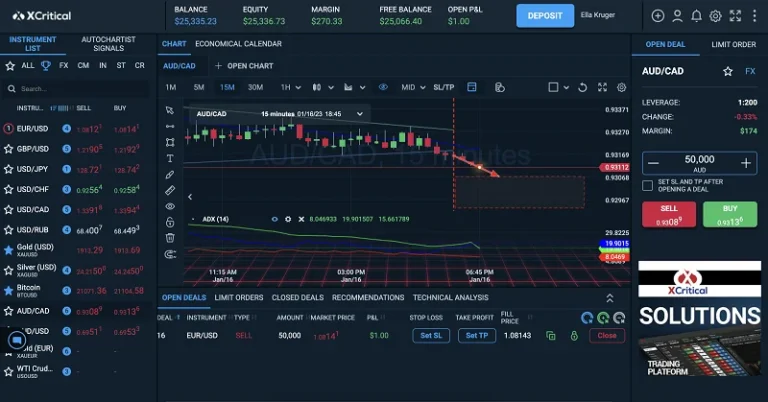Content
And to simplify buying and managing enterprise software, Red Hat Marketplace offers automated deployment of certified software on any Red Hat OpenShift cluster. CaaS-enabled automation ensures that your business pipeline works seamlessly. Some of the most sought-after CaaS providers include AWS Fargate, Google Cloud Run, Azure Container Instances (ACI), and Oracle Application Container Cloud Service. The future of CaaS and containerization looks promising, with new features, tools, and integrations constantly emerging. As more industries recognize the https://www.xcritical.com/ value of these technologies, we can expect to see even greater adoption and innovation in the coming years. Start your interactive tour and see how Wiz can secure your cloud from code to runtime.
How Container as a Service (CaaS) works
Using CaaS, developer and IT operations teams don’t have to worry about the underlying infrastructure. Azure Container Service (ACS) is a hosting environment primed for Microsoft’s cloud computing platform Azure, which allows users to develop container-based applications and deploy them in scalable computer clusters. ACS relies on an Azure-optimized What Is Crypto as a Service version of source-loaded container tools, and enables the operation of Linux containers in Docker format. Container-as-a-Service is a form of container-based virtualization that provides the runtime environment, orchestration tools, and all underlying infrastructure resources through a cloud computing provider.

Enable app modernization and cloud-native app development
MapR implements CaaS to manage applications that require real-time insights Prime Brokerage into user data that IT operational teams can understand and convey to developers. CaaS resource management and provisioning can either be automated or completed with a few clicks. As such, DevOps companies can enjoy a high-speed SDLC process that builds new apps, fixes bugs or adds new features by provisioning new containers in quick time.
Implement container-compatible storage
Let’s discuss the advantages of implementing containers and containerization in more detail. Back4app lets you deploy two types of apps — either Backend as a Service (BaaS) or Containers as a Service (CaaS). Since we’re deploying a containerized application, go with the “Containers as a Service” option. Before you version control your code, it’s wise to create a .gitignore file. A .gitignore file allows you to define what files and directories shouldn’t be added to the version control system. They shouldn’t be used for storing files, databases, or anything else that requires data persistence.
Container Orchestration Platforms
Unlike traditional virtual machines, containers encapsulate an application’s software environment, ensuring the application runs seamlessly across any computing environment. Containerization provides a lightweight alternative to virtual machines by offering similar resource isolation and allocation benefits but with significantly reduced overhead. Containers as a service (CaaS) provides a cloud-based platform where users can streamline container-based virtualization and container management processes. CaaS providers offer myriad features, including (but not limited to) container runtimes, orchestration layers and persistent storage management.
- Those who are against cloud computing services usually cite security concerns.
- CaaS is sometimes viewed as a special sub-type of the Infrastructure-as-a-service (IaaS) cloud service delivery model, but where the main commodity is containers rather than physical hardware and virtual machines.
- IT teams can release software products faster while keeping a check on bottlenecks, inefficient processes, and resource consumption.
- Merchants can buy what they need as they need it and purchase more software as their business grows.
- The tradeoff is that you’ll have less control over your container hosting stack.
- Keeping up with the latest ecommerce trends and evolution in the market is nearly impossible for independent brands.
- Relying on container services can help teams quickly test, deploy and update containers without disrupting the entire IT infrastructure.
With PaaS (like AWS Elastic Beanstalk and Heroku), the service provider abstracts away the hardware, underlying operating system, and runtime environments to provide enterprises a platform for building applications. Like most types of managed services, CaaS is subject to the limitation that users get less control over how their applications are hosted and run. When you use a CaaS, you are restricted to the container hosting, deployment, and management options that your CaaS platform supports. This allows users to be up and running quickly and easily, regardless of whether they have the in-house resources to set this up themselves. CaaS is based on container technology, which is an approach to application deployment that uses containers to host applications.
For instance, CaaS can integrate with continuous integration/continuous delivery (CI/CD) and DevOps pipelines to accelerate product improvement and development processes. CaaS platforms facilitate smooth communication between containers by using network overlays and software-defined networking (SDN) technologies to create virtual networks and optimize container connectivity. Containers create consistent environments to rapidly develop and deliver cloud-native applications that can run anywhere.

Because CaaS is such a complete offering, customers can deploy their containers to the platform, without concern about the underlying infrastructure or future scaling requirements. We’re the world’s leading provider of enterprise open source solutions—including Linux, cloud, container, and Kubernetes. We deliver hardened solutions that make it easier for enterprises to work across platforms and environments, from the core datacenter to the network edge.
Conventional networking stacks find it difficult to accommodate the short lifecycle of portable containers. These network stacks lack the access and policy management capabilities essential to supporting containerized applications. Hence, infrastructure and operations (I&O) teams should avoid the manual network configuration of containerized environments. Moreover, they should focus on network automation and provide developers with the appropriate tools to run containers at scale.
Instead of investing hefty sums in creating on-premise software, you can leverage SaaS as a cost-effective solution. Keep reading for a breakdown of how Container-as-a-Service platforms work as well as tips on when it does and doesn’t make sense to use this type of cloud container service. This helps create a better user experience for both the DevOps team and customers. The operation of the containers and the use of one-click solutions (with the exception of autoscalers) do not incur any further costs. The master node is responsible for the control, load distribution, and coordination of the container cluster.
Using and running what you need, when you need it, further reduces operating costs. If you have enough in-house resources to set up and manage the containers yourself, it can be more cost-effective to use Container as a Service. While the master node monitors how resources are used and the cluster’s status, the contained applications are run on the worker node. If a worker node fails, the master distributes the tasks required for the application’s operation to other nodes. If autoscaling is enabled, Kubernetes automatically adds a new node to the cluster if the available resources are not sufficient for the planned operation. There are additional costs for using the nodes added by the autoscaler, which are also billed to the minute.
Understanding these and knowing what companies provide can help organizations make informed decisions about which model best suits their requirements. Many newly developed applications today consist of microservices that are networked to communicate with each other. Each of these microservices is deployed in a container that runs on nodes, and nodes must be able to communicate with each other effectively. Each node contains information such as the hostname and IP address of the node, the status of all running nodes, the node’s current available capacity for scheduling additional pods and other software license data. By adopting these practices, organizations can fortify their security posture, keeping their containerized applications safe from development through deployment and beyond. The CaaS definition is Containers as a Service is a cloud computing model that allows developers to upload, build, scale, and manage containers.
This blog post explores the nuances of serverless CaaS and its many advantages, including scalability, flexibility, and cost-effectiveness. We’ll also cover how CaaS works, highlight leading serverless CaaS providers, and address security within the CaaS ecosystem—a critical aspect that can’t be overlooked. You can set the deployment branch, root directory, toggle auto-deploy, and set the environmental variables.




